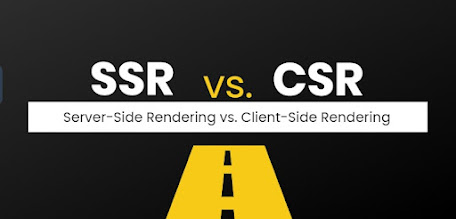Server-Side Rendering (SSR) vs. Client-Side Rendering (CSR)
.jpg)
In the evolving world of frontend development, how your app renders content can significantly impact performance, SEO, and user experience . Two popular rendering techniques are Server-Side Rendering (SSR) and Client-Side Rendering (CSR) . Let’s break down the differences, pros, and cons of each—and help you decide which approach suits your needs. What is Server-Side Rendering (SSR)? With SSR , the server renders the full HTML of a page and sends it to the client. The browser receives a fully formed HTML document, which gets displayed quickly. Example: // SSR with Next.js export async function getServerSideProps() { const data = await fetchData(); return { props: { data } }; } Advantages: Faster initial page load Great for SEO Content is available before JavaScript loads Disadvantages: Slower subsequent page navigation More server load Complex to cache dynamically generated pages What is Client-Side Rendering (CSR)? In C...